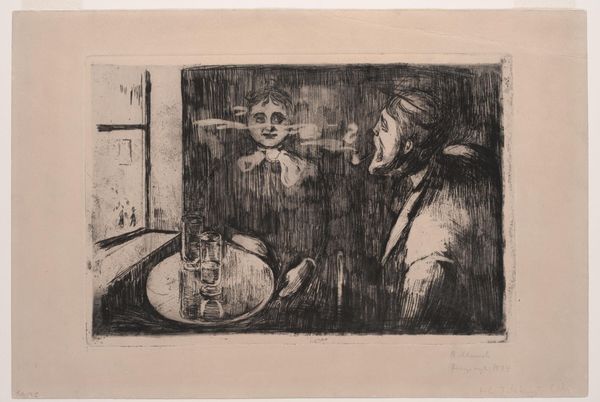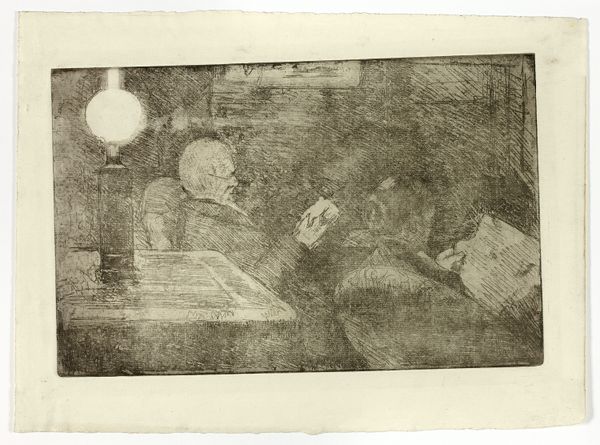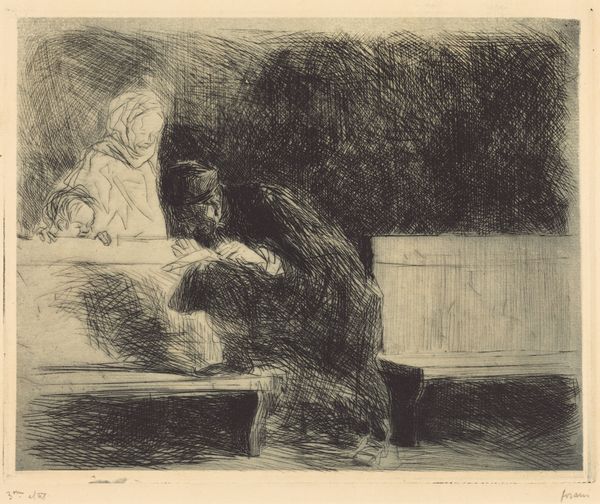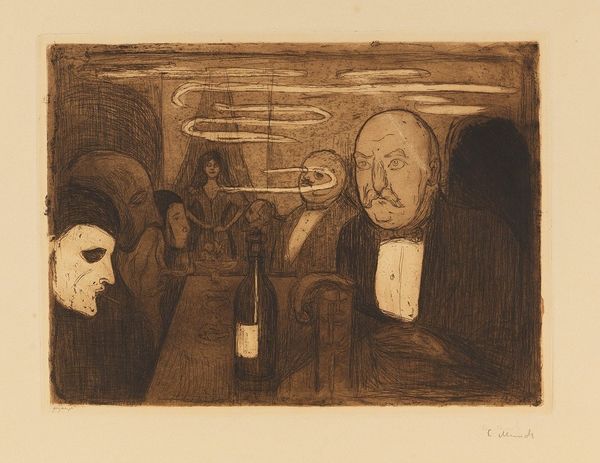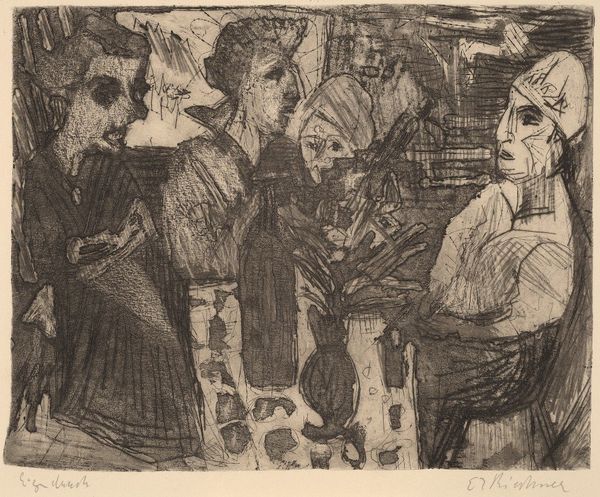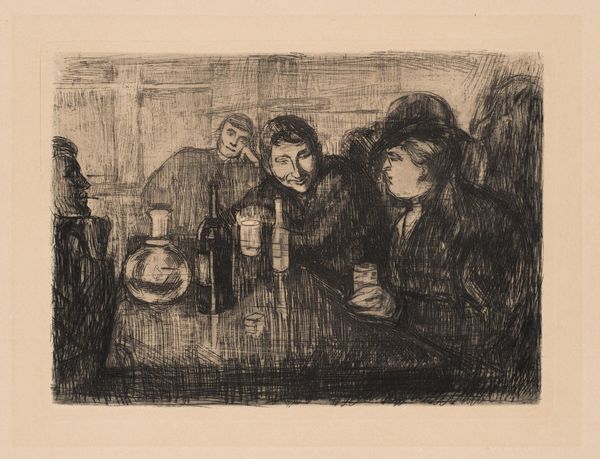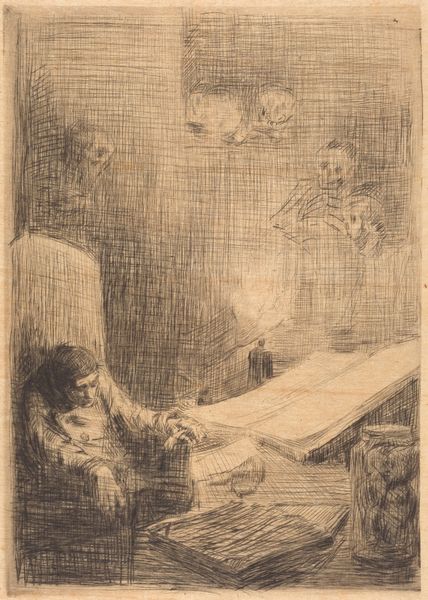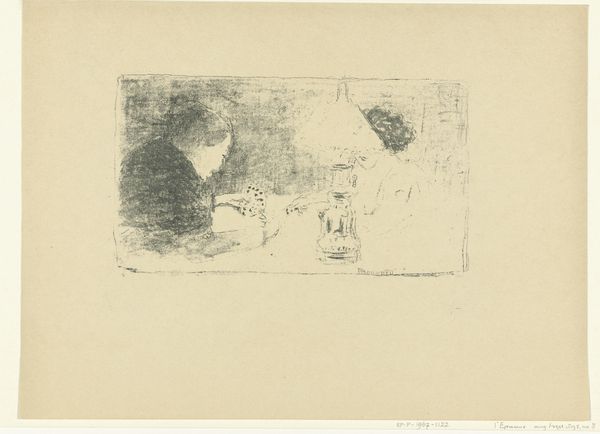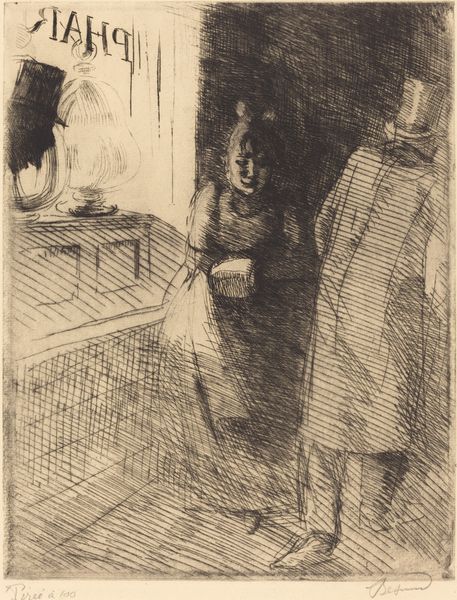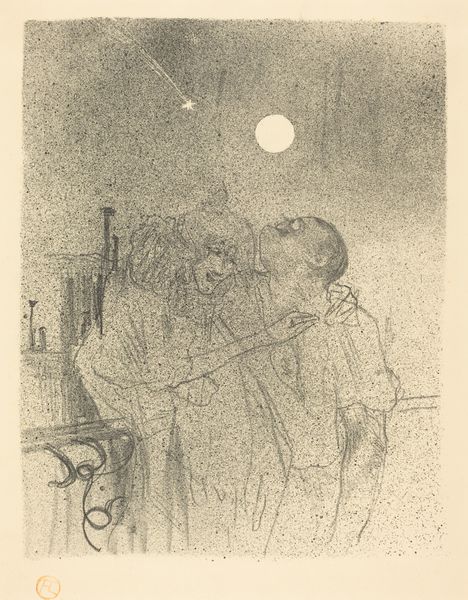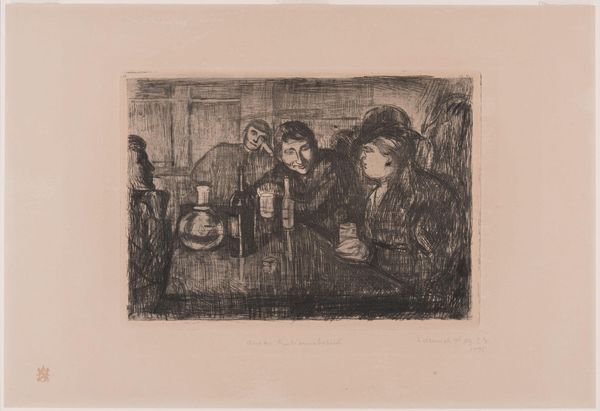
Dimensions: plate: 22.1 Ã 32.7 cm (8 11/16 Ã 12 7/8 in.) sheet: 33.6 Ã 47.5 cm (13 1/4 Ã 18 11/16 in.)
Copyright: CC0 1.0
Editor: This is Edvard Munch's "Tête-a-tête" from the Harvard Art Museums, an etching. The smoky haze and somber tones create a very unsettling mood. What symbols or meanings do you see in this piece? Curator: The smoke itself is a powerful symbol here, isn't it? It obscures and distorts the figures, suggesting a blurring of reality, perhaps a disconnect between the individuals. Note the woman’s almost ghostly appearance juxtaposed against the man’s more pronounced, almost tortured features. What does that contrast suggest to you? Editor: Perhaps the woman is a memory, or a figment of the man's imagination, and the smoke is a barrier between them? Curator: Precisely. Munch often used such imagery to explore themes of isolation and psychological turmoil. The "Tête-a-tête" becomes less a portrait of two people and more a landscape of the mind. Editor: That's a perspective shift I hadn't considered. Thanks.
Comments
No comments
Be the first to comment and join the conversation on the ultimate creative platform.

